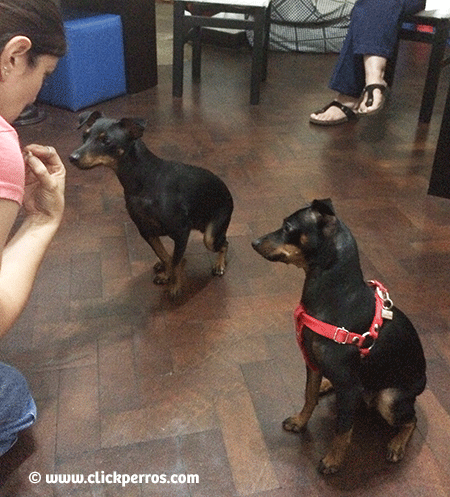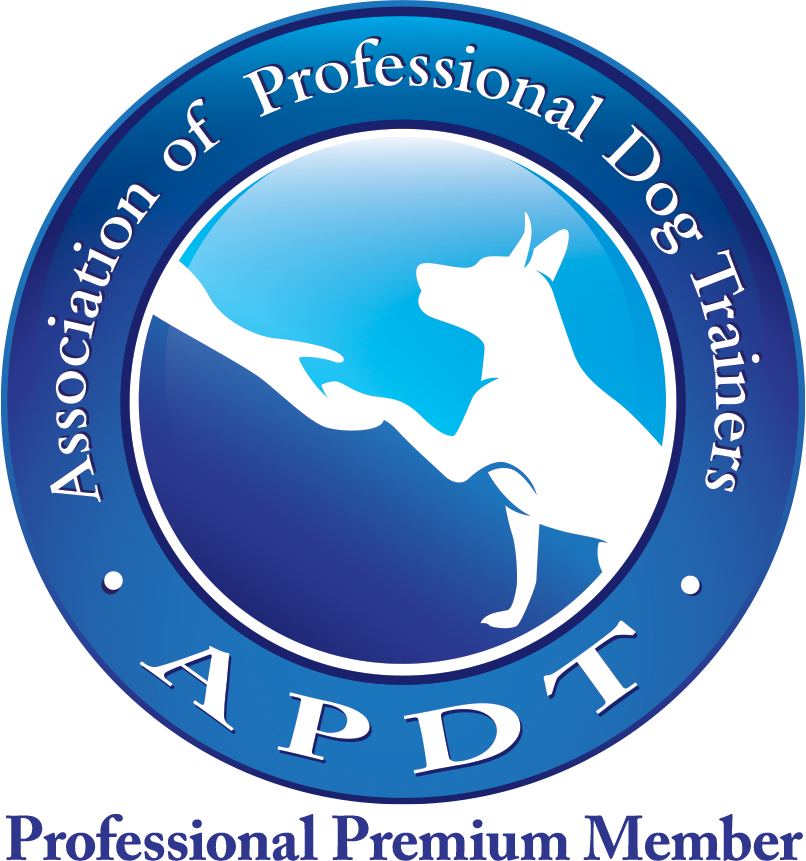I try to write my posts as unbiased as possible and recommend the products I consider to be useful and the best. I use affiliate links, this means that–at no extra cost to you–I can make a commission on a purchase you make after clicking on them. As an Amazon Associate I earn from qualifying purchases.
Part 2: Clicker Training Free Shaping
for Your Dog
Clicker training free shaping is a great combination of techniques. Clicker training allows your pet to learn quickly and free shaping is the method that will let you teach your dog complex behaviors, like open the door or find the keys.
If you really get into clicker training you will understand why it is an explosive situation. You will be teaching your dog to think for himself! You might learn your pet is smarter than what you thought!
This is an advanced technique, because you need to understand what you are doing and because you will need a really well trained eye to catch the small improvements in your dog's behavior.
The process involved in clicker training free shaping will teach your dog that some times he needs to think creatively to get the treat. What used to work before, may not work now and frustration will lead nowhere. So, this is also an advance technique for your dog.
Free Shaping Behavior
Shaping is an advanced dog training method because the trainer needs to be patient, observant and have great timing when delivering the reward. Luckily this becomes easier with a clicker!
Shaping is a powerful
technique because you can use it to train your canine friend complex
behaviors. These are behaviors that do not naturally occur in your dog.
Shaping is a positive method because you will never use force or discomfort. Instead you will wait and reward your pooch for smaller approximations to the end goal!
Clicker training free shaping combined!
Shaping builds on Capturing a dog behavior
When using the dog training method Capturing, we would sit and wait for the animal to do the behavior. Then reward it.
So, two things happened: 1- The hound had to do the behavior by himself, without any prompts, pushes or lures, 2- The purpose of the reward is to make the animal repeat that behavior more often (Operant Conditioning).
Shaping goes one step further. The trainer needs to have in mind the final behavior and most importantly, the trainer needs to have thought about how to break that behavior in many small behaviors that put together would lead to the end goal.
Clicker training free shaping
 |
Get a clicker with a wristband for ease of use. These kind are cheap and very comfortable to use. |
We will use the clicker to MARK each of those "small behaviors" successively. The dog must succeed at each step before the trainer can ask for more.
Here is a summary of how the game of clicker training free shaping goes:
Before the trainer starts, a plan is needed!
- End goal: We want the dog to get inside a box laying in the middle of the room.
- Behavior broken into many small steps: 1- The dog looks at the box, 2- He moves one step towards the box, 3- the dog moves three steps towards the box, 4- He walks all the way to the box, 5- The dog leans it's head inside the box, 6- He leans it's head and torso inside the box, 7- The dog puts one paw inside the box, 8- He puts both front paws inside the box, 9- The dog gets inside the box.
Now let's train the hound!
- The animal looks at the box.
- Click and treat!
- Repeat 3-5 times.
- Now ignore some looks but reward others. This is just to tell the dog that he needs to keep trying further.
- Ignore more and more looks to push him to do something else.
- The dog steps towards the box.
- Click and treat!
- You can call your canine friend to the start position if you want to or let him continue. You can also have him walk to you to get the treat, in which case he will have to start over.
- Your dog keeps walking towards the box.
- Click and treat! Click and treat! for every step forward.
- He sniffs the box - no click
- He touches the box with his paw - What to do?
- Click and treat! (sometimes dogs will go out of the trainers plan, the trainer needs to be ready for this!)
- Your dog paws at the box again.
- Click and treat!
- After a few paws the trainer needs to let the animal know again that more is needed for the click. So now the trainer starts ignoring some box pawing.
- The trainer only clicks and treats when the dog paws the box closer and closer to the top opening. This makes the pooch reach higher and higher until...
- The dog puts his paw inside the box.
- Click and treat!
- He puts his other paw inside the box.
- Click and treat! (super excited now!)
- He gets inside the box!
- Click and treat!
- Now it would be a good time to get the dog out of the box and wait for him to try and get inside it again. Click and treat!
- Call him out, wait until he gets in again.
- Click and treat!
- Now the trainer is only clicking and treating for the End Behavior!
- After many trials, when the animal is giving the behavior often, the trainer can start to add a verbal cue and then the clicker is no longer needed.
Read the articles: 1) How to get a reliable dog command, 2) Dog Verbal Commands and 3) Train your dog to sit for more information.
Important points about clicker training free shaping
- Always have a plan. What is the end behavior? how can it be broken into many small parts? What are those parts? Can they be broken down even more?
- Be flexible, your pet might do something different from your plan, take advantage of this!
- In the beginning you might make lots of mistakes. With practice you will get good timing and also a good sense of what "small" steps to click from your dog.
- In the beginning your furry friend might feel frustrated. With practice he will start understanding the rules of the game and will start "throwing" behaviors at you! He has learn that he has to keep trying until he gets it right!
- Clicker training free shaping is only used to get a behavior going. Once you have the final behavior put it on cue!
101 things to do with a box!

This is a simple, easy and fun game you can play with your dog to get used to clicker training free shaping.
You will start by using the method as outlined above. I gave you an example with a box to get you started. Here are more ideas on what you can shape your dog to do with a box.
- Sniff the box
- Touch the box with your paw
- Touch the box with your muzzle
- Move the box with your paw
- Move the box with your muzzle
- Carry the box in your mouth
- Get inside the box and sit stay
- Jump over the box
- The sky is the limit!
After many trials you can Free Shape anything as it goes! Just sit and wait for your pooch to start doing something, then reward him for anything new he does! This will teach your dog to be creative!
Troubleshooting Clicker Training Free Shaping
- I can't get my dog to move to the next step in my behavior breakdown!
This is normal if you are a beginner. You and your best friend need practice. Start using the clicker to train simple things. You can start by training your dog to Touch (see Part 3). Be patient and flexible and keep rewarding him often. If you stop the treats altogether, your puppy will get frustrated and might give up. That is why it is always good to "ignore" a few good responses and reward others. This keeps the animal guessing and trying.
- I clicked and treat the wrong thing, now what do I do?
Don't worry! Just ignore it until it goes away, while ignoring it, try to click and treat your dog for something else...to keep him motivated.
Continue to Clicker Training Guide Part 3: Clicker Training and Targeting.





New! Comments
Questions? Anecdotes? Tips? Leave me a comment in the box below.